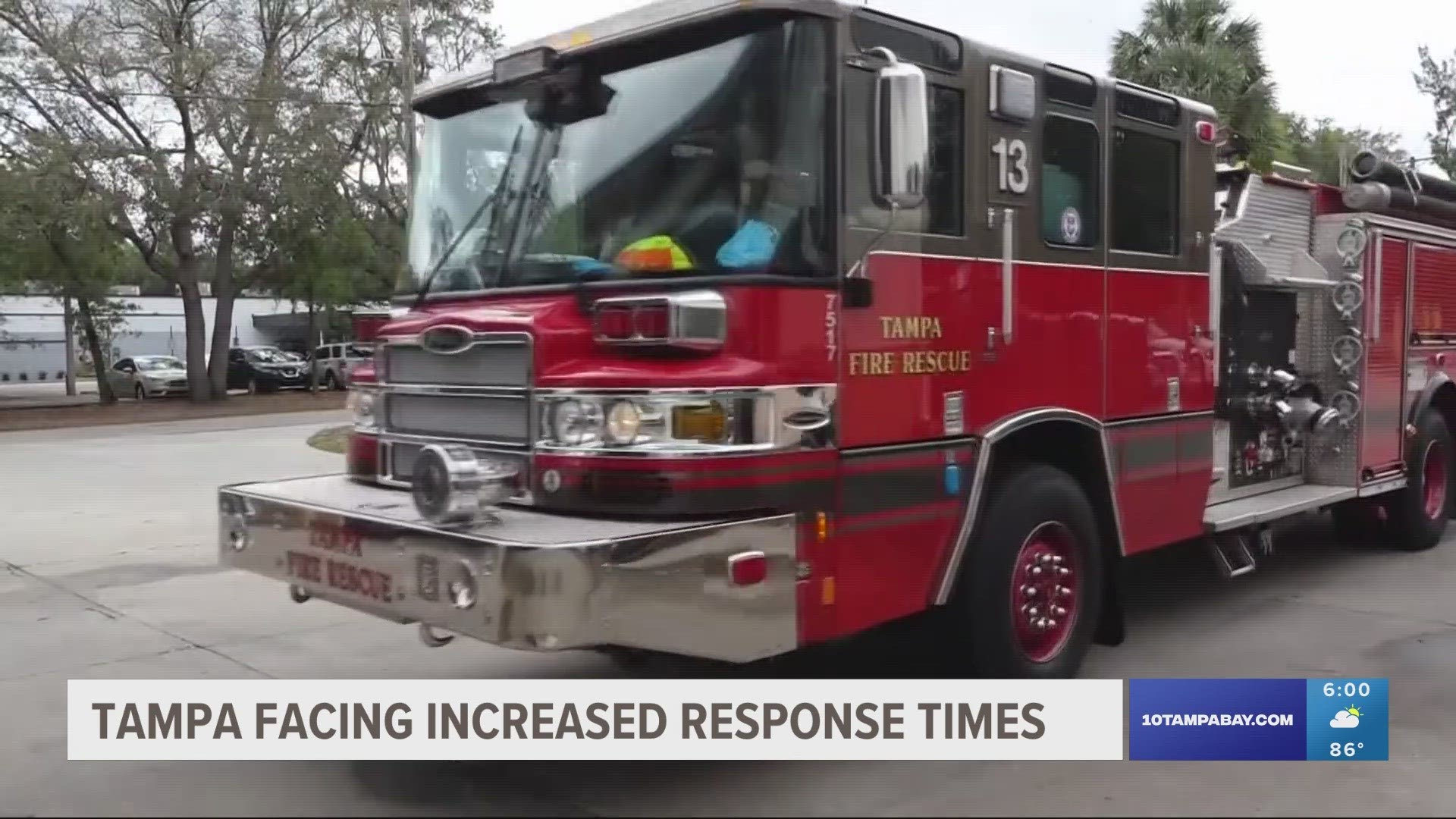TAMPA, Fla. — The city of Tampa is growing, and emergency response times are suffering.
That was the message from the head of Tampa‘s firefighter union on Friday as he made his case in front of a group of community leaders during a weekly civic leadership event called “Café’ con Tampa.”
Each week, Café con Tampa features invited guests tackling topics and issues that shape the city’s future.
This week's message took on an air of urgency, as Nick Stocco, president of the city’s firefighter's union, said the city’s fire rescue response times are not up to industry standards.
This, he said, is because the department isn’t keeping pace with Tampa’s booming population.
“The time is now to add stations,” Stocco said. “These response times are the worst that they've ever been, and we need to decrease them by increasing the stations and the first responders out in the streets.”
Stocco says the union’s internal report in many ways mirrored the city’s own figures, but they take issue with an outside consultant report which suggests a less pressing need for more firehouses.
Stocco said the city also urgently needs to modernize its data collection and communications equipment to improve efficiency.
Response times are broken into four components.
- Dispatch, the time from when a 911 call is placed to notifying a station should be less than 60 seconds.
- Turnout. The time it takes for firefighters to receive that notification and start rolling. That - should take less than 90 seconds.
- Travel time to the scene from the firehouse has an industry standard of less than four minutes.
And a targeted total response time of about four minutes overall.
Statistically, Tampa does pretty well when it comes to dispatch and turnout time. It's the travel time that lengthens their overall response.
Some of that can be traced to increasing traffic, but Stocco says a lot of it has to do with a lack of strategically located fire stations.
The union president got pushback from city administrators who attended the event. While they agreed response times need to improve, they suggested there may be less expensive means to deliver more responsive service.
“If 90% of the calls are EMS, why - don't we have kind of an antiquated system? And why don't we have - do we even need fire stations?” asked Adam Smith, Tampa’s communications director. “Why don't we just have - save taxpayer money - and put ambulances scattered throughout? it seems like we're dealing with an antiquated system. Shouldn’t we just blow up the model and do something differently, more focused on ambulances than fire?”
"We still do fire prevention, but a lot of things have been more emergency medicine. So, medical problems, heart attacks, heat strokes, of course the heat. Injuries and stuff," Chief Barbara Tripp said.
Tripp also attended, listened, and then used the public Q&A portion of the event to voice some frustration.
“President Stocco I wish we could've done this together and I think we could've answered a lot of that citizens’ concerns and questions when it comes to response time and with the city is doing,” Tripp said.
Café con Tampa organizers said they would gladly invite Chief Tripp back soon as one of their featured speakers.
People who attend the weekly Café con Tampa events are often many of the same people seen at city council meetings, representing larger groups of homeowners and organizations.
The Fire Union hopes that by influencing them, they, in turn, will put pressure on the city to make increased funding a priority.
The fire union says it plans to bring its same message of urgency to the Tampa City Council.

